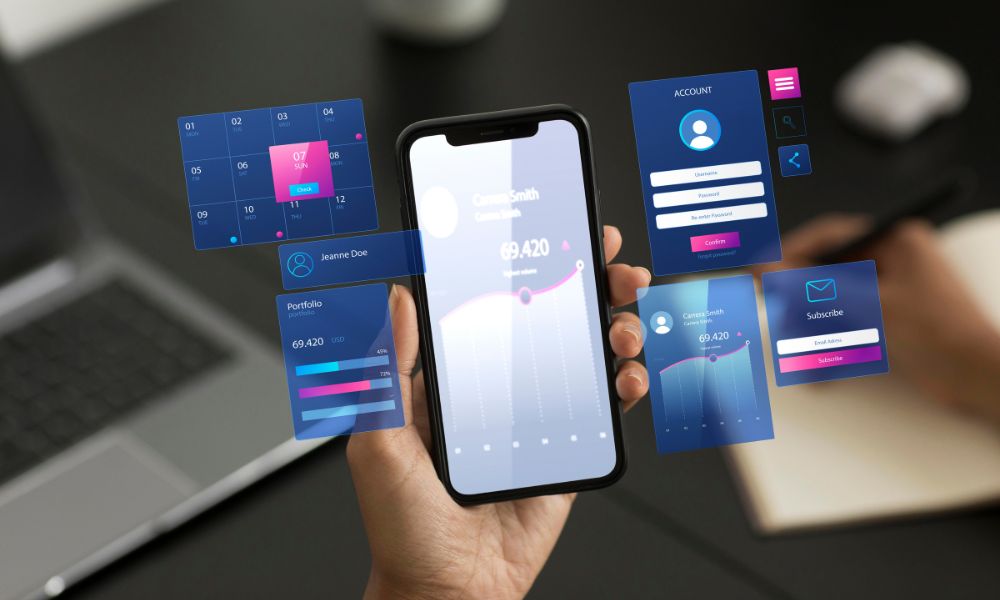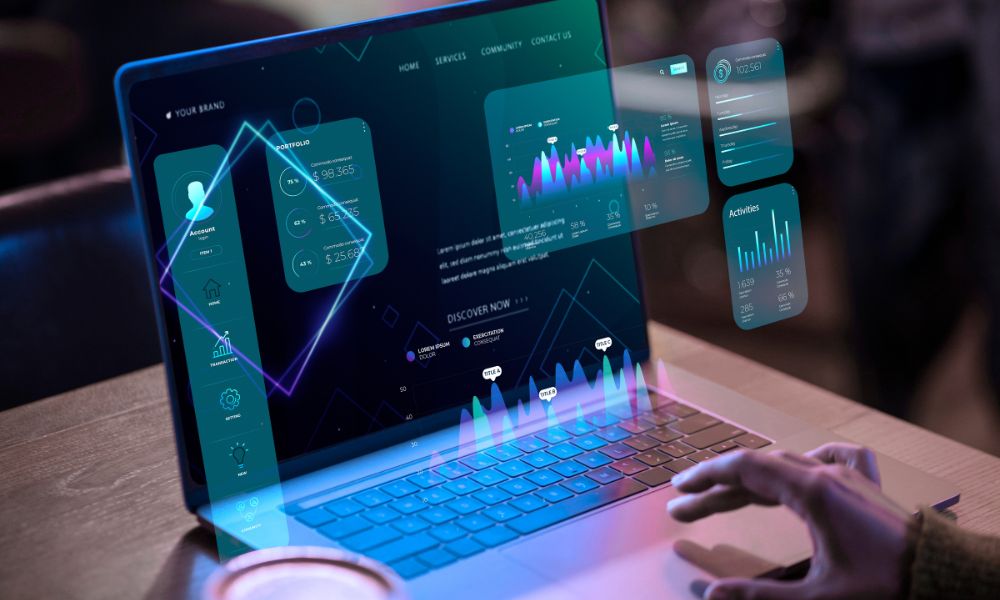SaaS influencer marketing is becoming a powerful way for software companies to connect with the right audience, explain what their product can do, and turn interest into real sign-ups. Instead of quick, one-off promotions, it focuses on building credibility through people who already have the trust of potential users.
These partners might be industry analysts, niche content creators, or respected professionals who actively use and recommend software. By collaborating with them, SaaS brands can reach audiences that are already exploring solutions in their space. Whether it’s a B2B campaign led by a LinkedIn thought leader or a B2C push driven by a YouTube product reviewer, influencer marketing can support both short-term wins and long-term growth.
This guide will cover what makes SaaS influencer marketing unique, how to identify and partner with the right creators, strategies to make campaigns work, and ways to measure results that actually matter to your business.

What is SaaS Influencer Marketing and Why It Matters
SaaS influencer marketing is the process of working with people who have built authority and trust within your industry to promote software products. These influencers often create content that shows real-world applications, walks through product features, and explains how the tool solves specific problems.
The value for SaaS brands comes from the type of product being sold. Software can be complex and intangible, making it harder for buyers to understand without a clear demonstration. Influencers bridge that gap by producing content that educates, answers questions, and shows exactly how the product works in practice.
This is different from influencer marketing in consumer goods, where the focus might be on quick visual appeal. In SaaS, collaborations often take the form of detailed tutorials, case studies, webinars, or multi-part content series designed to inform rather than just promote. The aim is to help potential customers feel confident enough to take the next step, whether that’s signing up for a demo or starting a trial.
The Business Case – Why SaaS Brands Invest in Influencer Partnerships?
Influencer marketing for SaaS isn’t simply about getting more eyes on your brand, it’s about accelerating trust and shortening the path from awareness to conversion. Because SaaS products are often subscription-based and involve a higher commitment, buyers are cautious. Influencers who already have credibility with your target market can play a big role in removing that hesitation.
In competitive SaaS markets, influencer partnerships can also help your brand stand out by positioning it alongside respected voices in the industry. This association can create a perception of quality and authority that traditional advertising often can’t achieve.
Shortening long sales cycles – In SaaS, the decision process can take weeks or months. Buyers want proof that the software will solve their problem and deliver value. Influencers help speed this up by sharing authentic experiences, walking through real use cases, and addressing common concerns before a sales rep even gets involved.
Educating potential with context and clarity – A skilled influencer can turn technical product features into clear, relatable benefits. Whether it’s a live demo, a tutorial video, or a podcast discussion, this type of content answers the “how” and “why” questions that marketing materials alone might not cover.
Driving higher-quality leads and retention – When influencers introduce your product to their audience, they’re speaking to people who are often actively looking for a solution. This typically leads to better-fit leads, higher conversion rates, and stronger customer loyalty. Customers who arrive through trusted recommendations are also more likely to renew and recommend your product to others, amplifying the long-term impact.
B2B vs. B2C: Adapting Your SaaS Influencer Approach
Not all SaaS influencer campaigns follow the same playbook. The strategy and platforms you choose will depend on whether you’re targeting a business audience or individual consumers. While both rely on trust and expertise, the way you deliver value, and the type of content that works can be very different.
B2B SaaS Influencer Tactics
B2B SaaS products often address specific industry challenges, making it important to work with influencers who have authority in that space. These are often professionals with a strong presence on LinkedIn, subject-matter experts featured in webinars, or industry analysts whose recommendations carry weight with decision-makers.
Common B2B approaches include:
- Webinars and virtual events where influencers share how they use the software in their own work
- In-depth LinkedIn posts that break down product features into clear business benefits
- Podcast interviews that position your brand alongside other thought leaders
- Case study collaborations where influencers walk through measurable results achieved with your tool
The focus here is on credibility and proof, showing your product in action and validating its ROI for a specific business need.
B2C SaaS Influencer Channels
B2C SaaS campaigns often prioritize platforms with high visual and interactive appeal, such as TikTok and YouTube. These channels allow influencers to demonstrate software in real time, create step-by-step guides, or share creative ways to use the product.
Effective B2C formats include:
- Short-form TikTok tutorials that highlight quick wins or surprising features
- YouTube reviews and walkthroughs offering honest opinions and live demos
- Instagram Reels or Stories for bite-sized tips and customer success moments
- Challenge-based campaigns where influencers encourage their audience to try the product and share their results
The key for B2C is relatability. Content should be easy to follow, visually engaging, and tied to everyday problems or goals the audience cares about.

Who Exactly Are SaaS Influencers?
SaaS influencers are individuals who have built credibility within a specific niche and can influence the software choices of their audience. They are not always traditional social media celebrities, in many cases, they are professionals or creators whose expertise and real-world experience make their recommendations valuable.
Industry experts: These are well-known figures in their field, such as marketing strategists, HR consultants, or IT specialists. They often share in-depth insights, run workshops, or publish research, making them trusted voices for business buyers.
Niche content creators: These influencers produce consistent, topic-specific content on platforms like YouTube, LinkedIn, or industry blogs. For example, a productivity-focused YouTuber might review different project management tools and compare their features in detail.
Micro thought leaders: Often overlooked, these are professionals with smaller but highly engaged audiences. A software engineer with 5,000 LinkedIn followers who actively discusses the latest CRM trends can influence more effectively than a larger creator with a less targeted audience.
Examples in action:
- Marketing SaaS: Neil Patel (marketing analytics), Ahrefs’ own in-house content team
- HR tech: People Managing People podcast hosts, HR influencers on LinkedIn who specialize in employee engagement software
- Productivity tools: Ali Abdaal (Notion, task management tools), Thomas Frank (workflow automation, personal productivity apps)
The common thread is that these influencers speak directly to audiences already interested in solving a specific problem, and they have the credibility to recommend a solution with authority.
Finding the Right Influencers for Your SaaS Campaign
Choosing the right influencers is one of the most important steps in making a SaaS campaign successful. It’s not just about follower count, it’s about audience relevance, credibility, and the ability to communicate your product’s value in a way that resonates with potential users.
Micro vs. Macro Influencers – Which Works Best for SaaS?
Micro influencers (typically 1,000–50,000 followers) tend to have highly engaged, niche audiences. They’re ideal for SaaS brands that want targeted reach, authentic conversations, and stronger trust with potential buyers. A project management tool aimed at small creative teams, for example, might benefit more from ten micro influencers than one large account.
Macro influencers (over 100,000 followers) can deliver broader brand awareness and faster reach. This can work well for SaaS products with a wider market appeal, like graphic design software or cloud storage solutions. However, higher reach often comes at a higher cost, and the audience may be less specialized.
Many SaaS campaigns use a hybrid approach, combining macro influencers for reach and micro influencers for depth.
💡Our guide on Nano Influencers vs Micro Influencers explains how each type can impact results.
Best Platforms to Discover SaaS Influencers
Where you search will depend on your audience:
- LinkedIn – Ideal for B2B software targeting decision-makers and industry professionals
- Twitter/X – Great for real-time engagement and connecting with tech-savvy audiences
- YouTube – Perfect for in-depth product demos, comparisons, and tutorials
- Podcasts – Valuable for niche, long-form discussions that build credibility
- Industry forums or communities – Such as Slack groups, Discord servers, or niche SaaS communities where creators already have influence
💡Managing content creation, approvals, and performance tracking is easier with the right software. Our list of the best Influencer Collaboration Platforms explains key features to look for.
Tools to Identify and Vet Influencers with Hypefy
Hypefy offers an all-in-one platform designed to help SaaS brands find, connect with, and manage influencer partnerships from start to finish. Instead of using separate tools for each step, Hypefy brings the entire process together:
- Influencer Discovery Tool – Search across multiple platforms to identify influencers who match your target audience, niche, and campaign goals.
- Influencer Match – Instantly get recommendations for creators based on your product type, industry, and desired outcomes.
- Influencer Outreach Tool – Contact influencers directly through streamlined workflows, making it easier to start conversations and build relationships.
- Influencer Hiring Platform – Manage negotiations, agreements, and campaign details in one place.
- Influencer Payment Platform – Pay influencers quickly and securely, with tracking for both one-off and ongoing collaborations.
- Influencer Marketplace Powered by AI – Browse a curated network of verified creators and filter by engagement, audience demographics, or content style.
- Influencer Marketing Agency Services – For brands that want additional support, Hypefy’s team can help plan, execute, and optimize campaigns.
By keeping discovery, outreach, hiring, and payments within a single platform, Hypefy helps SaaS brands save time, improve collaboration, and run more effective influencer campaigns.

What Are The Best Practices For Influencer Marketing In The SaaS Industry?
An effective SaaS influencer campaign is built on more than just matching with the right creator. It’s about creating a process that encourages authenticity, aligns with business goals, and produces measurable results.
1. Set clear objectives from the start
Decide whether the focus is awareness, lead generation, free trials, or customer onboarding. Your goals will shape the type of influencer you work with, the platforms you prioritize, and the format of the content.
2. Prioritize relevance over reach
A smaller influencer with deep credibility in a specific niche can often outperform a large account with a broad but unfocused audience. Look for indicators like audience engagement, comment quality, and alignment with your target user profile.
3. Build a two-way collaboration
Instead of handing over a rigid script, work with influencers to co-create content. Their insights into what resonates with their audience can help you present your product in ways that feel authentic and natural.
4. Use real-life applications
Abstract descriptions of SaaS features can be hard to connect with. Campaigns perform better when influencers show how the product fits into actual workflows, solves specific problems, or delivers measurable results.
5. Diversify content formats
Don’t rely solely on one type of content. Combine product demos, tutorials, webinars, behind-the-scenes videos, and Q&A sessions to reach different segments of your audience and keep engagement high.
6. Track beyond vanity metrics
Likes and views tell part of the story, but SaaS brands should also measure leads generated, demo sign-ups, trial activations, and churn reduction. These metrics reveal the real business impact of your campaign.
7. Build relationships for the long term
One-off campaigns can generate awareness, but ongoing partnerships deepen trust and can lead to higher lifetime value from customers. Regular appearances, co-branded webinars, or multi-video series help keep your product top of mind.
8. Account for legal and compliance requirements
For certain industries and regions, influencer content may need to follow specific disclosure, data privacy, or advertising regulations. Make sure all collaborations comply with relevant guidelines to protect both your brand and the influencer.
By focusing on relevance, collaboration, and meaningful results, SaaS brands can create influencer campaigns that do more than generate impressions, they become a core part of the growth strategy.
💡For early-stage SaaS companies, starting with a lean and focused approach can make influencer marketing more manageable. Our Influencer Marketing for Startups guide offers strategies tailored to new brands.
What Are the Advantages of SaaS Influencer Marketing?
Influencer marketing offers SaaS brands benefits that go beyond traditional advertising. Because software products often require explanation, proof, and trust, influencers can help bridge the gap between brand messaging and customer understanding.
- Faster trust-building in long sales cycles: In SaaS, decisions are rarely made on impulse. Buyers research, compare, and seek recommendations before committing. An endorsement from a trusted industry figure can speed up this process by validating your product early in the decision journey.
- Education that drives adoption: Influencers can break down complex features into practical, easy-to-follow use cases. This helps potential customers understand how your software fits into their daily work, making them more likely to try it.
- Access to highly targeted audiences: SaaS influencers often serve niche markets, such as marketing automation, HR tech, or project management. Partnering with them allows you to reach people who already have an interest in your category, improving lead quality.
- Improved content credibility: Influencer-created content feels more authentic than branded ads. When an influencer explains your product through their own workflow or success story, it’s easier for the audience to trust and relate to it.
- Extended content lifespan: Unlike short-lived ads, influencer content, such as YouTube reviews, blog tutorials, or podcast episodes, can continue attracting views, leads, and conversions long after the campaign ends.
- Potential for ongoing advocacy: Building strong relationships with influencers can turn them into long-term advocates for your brand. This sustained exposure can boost brand recognition and customer loyalty over time.
When used strategically, these advantages make influencer marketing a powerful channel for SaaS brands, delivering both immediate visibility and long-term growth potential.

Measuring Success: Metrics That Matter in SaaS Influencer Marketing
Measuring the impact of influencer marketing in SaaS goes far beyond counting likes and shares. To understand whether a campaign is delivering value, you need to track metrics that connect directly to business outcomes.
1. Lead quality, not just lead volume – High traffic means little if it doesn’t translate into qualified prospects. Track how many influencer-driven leads match your target customer profile and are likely to convert.
2. Demo sign-ups and free trial activations – For SaaS, trials and demos are often the most important conversion point before a paid subscription. Monitor how many come directly from influencer content, using unique links or promo codes.
3. Conversion rate to paid customers – Knowing how many trial users or demo attendees turn into paying customers shows the true revenue impact of your influencer partnerships.
4. Customer acquisition cost (CAC) – Compare the cost of influencer campaigns to the number of paying customers acquired. Lower CAC means the channel is efficient and scalable.
5. Retention rate and churn reduction – Influencers who educate users well can help reduce churn. Track whether influencer-driven sign-ups stay subscribed longer or renew at higher rates than other customer segments.
6. Engagement quality – Look beyond raw engagement numbers to assess the quality of audience interactions. Comments, questions, and shares that show genuine interest in the product are more valuable than passive likes.
7. Long-term brand lift – Some results aren’t immediate. Keep an eye on brand search volume, direct traffic, and inbound inquiries over time to measure ongoing awareness from influencer content.
By focusing on these metrics, SaaS companies can clearly see which influencer collaborations are driving real business growth, and which need refining for better ROI.
💡Budgeting correctly is key to ensuring your influencer partnerships deliver a strong ROI. Our breakdown of the Cost of Influencer Marketing covers typical rates, hidden expenses, and trends to watch.
Popular Content Formats in SaaS Influencer Marketing
The right content format can make the difference between a viewer scrolling past and a potential customer taking action. In SaaS influencer marketing, the most effective formats tend to be those that explain, demonstrate, and provide real-world context for the product.
- 1. Product demos and walkthroughs: Step-by-step videos or live demonstrations show exactly how the software works. This format is especially useful for highlighting key features and ease of use.
- 2. Tutorials and how-to guides: Detailed tutorials help users solve a specific problem using your product. These can be video-based, blog posts, or even carousel posts on LinkedIn or Instagram.
- 3. Case studies and success stories: Influencers sharing their own results, or those of their clients, provides social proof and makes the benefits more tangible.
- 4. Webinars and virtual events: Live sessions allow for deeper explanations and interactive Q&A. They work well for complex SaaS products that require context or training.
- 5. Comparison and review content: Side-by-side comparisons with other tools help potential customers understand what makes your product stand out.
- 6. Podcasts and long-form interviews: Conversations with industry experts or influencers can cover use cases, trends, and thought leadership topics while naturally weaving in your product.
- 7. Short-form social videos: Platforms like TikTok, Instagram Reels, and YouTube Shorts are ideal for quick tips, feature highlights, or mini success stories that spark curiosity.
By choosing formats that align with your audience’s learning style and your product’s complexity, you can make influencer content more engaging, memorable, and conversion-friendly.
Common Roadblocks in SaaS Influencer Marketing (and How to Overcome Them)
Even the best-planned SaaS influencer campaigns can run into challenges. Addressing these early can save time, improve results, and make partnerships more effective.
Finding influencers in hyper-specialized niches
For SaaS products serving very specific industries, such as legal case management software or medical scheduling tools, it can be difficult to find influencers with both subject expertise and a relevant audience.
How to overcome it: Expand your definition of “influencer” beyond social media personalities. Consider industry bloggers, podcast hosts, active community moderators, or respected consultants. Engaging with niche forums, LinkedIn groups, and professional associations can also help uncover credible voices with influence over the right audience.
Making complex SaaS products easy to understand
Software often has multiple features, integrations, and technical terms that can overwhelm potential customers. If the influencer’s explanation is too complex or vague, the audience may lose interest.
How to overcome it: Provide influencers with clear, simple explanations of key features and real-world use cases. Encourage them to focus on solving a specific problem rather than listing every capability. Visual aids like annotated screenshots, screen recordings, or live demos can also make concepts easier to grasp.
Sustaining visibility in long decision-making cycles
B2B SaaS purchases, in particular, often involve multiple stakeholders and weeks or months of research. A single influencer post might create initial interest, but won’t carry the audience through the entire process.
How to overcome it: Plan for multiple touchpoints with the same influencer or group of influencers. This could include a series of posts, follow-up tutorials, or co-hosted webinars. Consistent exposure reinforces brand familiarity and keeps your product in the consideration set as prospects move closer to making a decision.

Final Thoughts – Is SaaS Influencer Marketing Right for You?
SaaS influencer marketing can be a powerful growth channel, but it works best when there’s a clear plan, the right partnerships, and a willingness to commit to long-term relationship building. It’s not about quick wins, it’s about creating credible, educational content that moves prospects from awareness to action.
If your product requires explanation, benefits from social proof, and serves an audience that values expert recommendations, influencer marketing is worth serious consideration. The most successful SaaS brands in this space treat influencers as strategic partners, not just content providers.
Before you start, make sure you have:
- A defined target audience and clear campaign goals
- The resources to support influencers with information, creative assets, and timely communication
- A plan to measure results using metrics that reflect real business impact
With the right approach, SaaS influencer marketing can help you reach the right people, speed up decision-making, and build lasting trust with customers who stay with you for the long haul.



